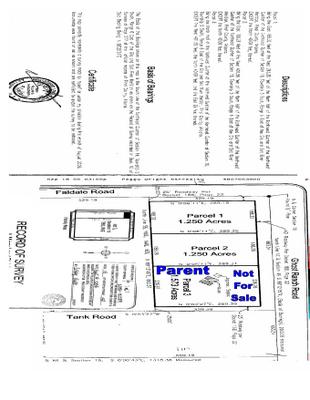The Valley housing market kicked off the New Year with a bang.
January home sales set a new record at 9,360 recorded sales. That's a gain of nearly 4,300 sales year - over - year, according to the Arizona Real Estate Center at Arizona State University.
Home prices continue to rise, up 24 percent year-over-year to a median home price of $194,000.00.
And for the first time ever, the median home price in Paradise Valley hit the $1 million mark. This is the first time that a median resale home price in any Valley community exceeded $1 million, according to Jay Butler, director of the Arizona Real Estate Center.
Arizona Real Estate researchers said that with mortgage rates higher now than a year ago, the average mortgage payment rose nearly $200 on the typical 30-year mortgage.
Checking sales figures and median sales prices Valleywide from January 2004 to 2005:
* Recorded sales in Phoenix increased from 1,460 sales to 2,685 sales, while the median sales price increased to $154,000.00 from $127,000.00
* The Scottsdale resale home market improved from 515 to 785 recorded sales. The median sales price continued its upward movement by increasing from $350,000 to $458,690.00
* Mesa resales grew from 665 to 1,060 sales, while the median price increased from $144,000.00 to $172,900.00.
* Glendale improved from 390 to 640 sales and the median sales price increased from $148,950.00 to $171,450.00.
* The Sun City resale market increased from 125 to 160 sales, with the median sales price increasing to $159,000.00 from $124,000.00. Resale activity in Sun City West increased from 65 to 95 recorded sales and the median sales price increased from $154,900.00 to $179,900.00.
* Gilbert's resale activity moved from 280 to 565 sales and the median sales price increased from $190,000.00 to $244,000.00.
* Chandler's resale market expanded from 325 to 625 recorded sales, while the median sales price increased from $165,000.00 to $219,000.00.
* The resale market in Tempe improved from 115 to 195 sales, with the median sales price increasing from $166,950.00 to $219,000.00.
*Avondale's resale market grew from 105 to 220 sales with the median price moving from $146,250.00 to $188,140.00.
* El Mirage improved from 50 sales to 155 sales, with the median sales price rising from $123,500.00 to $150,410.00.
* Goodyear moved from 75 to 195 sales, while the median price increased from $149,900 to $204,000.00.
* Surprise increased from 170 sales to 370 sales, median sales rose from $145,115.00 to $195,000.00.
As seen in: The Business Journal Phoenix, The Arizona Real Estate CEnter is associated with East College at Arizona State University's East campus. For more: www.east.asu.edu Latest News 5:31 pm MST Wednesday 2/16/2005.








